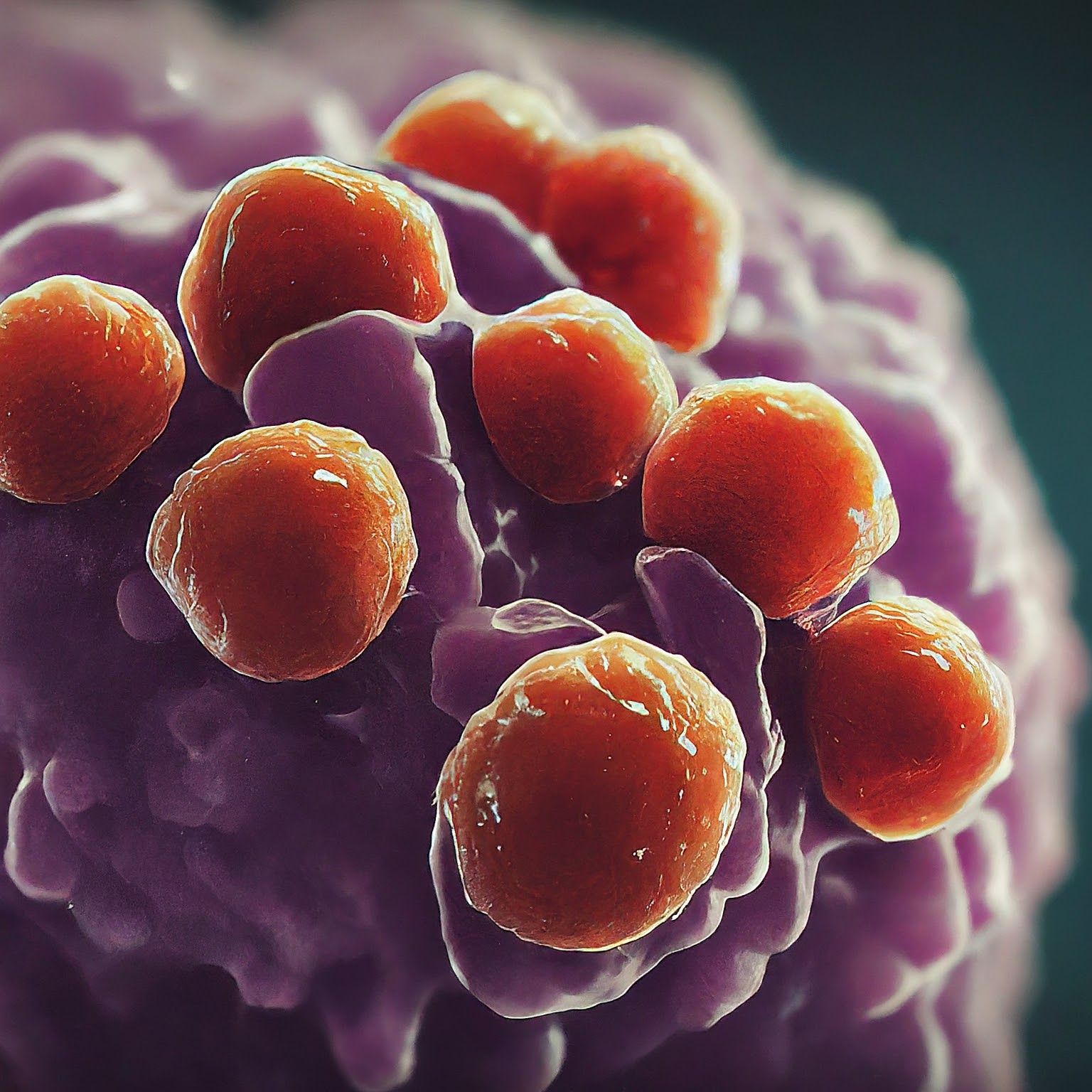Extended SGX301 Treatment Shows Positive Results in Early-Stage CTCL
SGX301 has led positive results in early-stage CTCL, with over 70% achieving treatment success in the phase 3 FLASH study.
Microscopic photorealistic image of T-cell lymphoma cells - Generated with Google Gemini AI

The phase 3 FLASH (NCT02448381) study evaluating SGX301 (HyBryte) has shown promising results, with over 70% of patients with early-stage cutaneous T-cell lymphoma (CTCL) experiencing positive treatment responses.1
The open-label, investigator-initiated study of SGX301, a novel photodynamic therapy, is currently evaluating its extended treatment for up to 12 months in patients with early-stage CTCL. To date, 9 patients have been enrolled, with 6 completing at least 18 weeks of therapy. Of these patients, 5 have achieved treatment success, which is defined as a 50% or greater improvement in the cumulative modified composite assessment of index lesion severity score.
Three patients responded within the first 12 weeks, and 2 reached a complete response by week 18. The remaining patients are early in their treatment cycle, with 1 showing substantial improvement. Further, SGX301 has been well tolerated, with no safety concerns observed.
"The complete response rate, consistent treatment response and safety profile across multiple clinical studies to date with [SGX301] has been exciting to see," said Ellen Kim, MD, director, Penn Cutaneous Lymphoma Program, vice chair of clinical operations, Dermatology Department, and professor of Dermatology at the Hospital of the University of Pennsylvania, and principal investigator of the IIS and lead investigator of the FLASH2 study, in a press release. "In the first phase 3 FLASH study, [SGX301] was shown to be efficacious with a benign safety profile compared to the current therapies of steroids, chemotherapeutics and ultraviolet light in this chronic orphan disease.”
SGX301 is a first-in-class treatment utilizing synthetic hypericin as the active ingredient. This photosensitizer is topically applied to skin lesions and activated by safe, visible light approximately 24 hours later. The red-yellow spectrum of light used in the treatment provides deeper skin penetration, enabling it to address even thicker lesions and plaques effectively. This approach avoids the risk of secondary malignancies often associated with ultraviolet-based therapies.
The phase 3 FLASH trial enrolled 169 patients with early-stage CTCL. A total of 166 patients were evaluable, with stage IA, IB or IIA CTCL.2
Investigators sought to evaluate SGX301 when given to patients over 3 treatment cycles. In cycle 1, 116 patients received SGX301 treatment, with 16% achieving at least a 50% reduction in lesions compared with only 4% in the placebo group at 8 weeks (P =.04).1
In cycle 2, the second open-label treatment cycle, all patients received SGX301, and 40% of those treated for 12 weeks showed a significant response. Notably, SGX301 was also effective in both plaque (response 42%; P <.0001 relative to placebo treatment in cycle 1) and patch lesions (response 37%; P =.0009 relative to placebo treatment in cycle 1).
The third cycle of treatment was optional, with 66% of patients opting to continue. Those who did showed a 49% positive treatment response after completing all 3 cycles (P <.0001 vs patients receiving placebo in cycle 1). Notably, SGX301 demonstrated minimal systemic absorption and remained free from the mutagenic risks associated with other CTCL therapies.
SGX301 has previously received orphan drug and fast track designations from the FDA, as well as orphan designation from the European Medicines Agency. In December 2023, the FDA granted a type A meeting to discuss the design of a second trial of SGX301 in patients with CTCL.
A second phase 3 trial, FLASH2, will replicate the successful design of the initial FLASH trial but extend the treatment cycle to 18 weeks for a continuous evaluation of efficacy. FLASH2 is a randomized, double-blind, placebo-controlled, multicenter study that will enroll approximately 80 patients with early-stage CTCL.3
“With limited treatment options, especially in the early stages of their disease, CTCL patients are often searching for alternative treatments. In our U.S. Food and Drug Administration (FDA)-funded study, initial results evaluating the expanded use of [SGX301] in a "real world" treatment setting remain very promising, further supporting and extending results from the previous positive phase 2 and 3 clinical trials. We look forward to continuing to work with the FDA to complete this study while we participate in the confirmatory phase 3 placebo-controlled FLASH2 study," added Kim in the press release.
REFERENCES:
HyBryte™ expanded treatment continues to demonstrate positive outcomes in early-stage cutaneous T-cell lymphoma. News release. Soligenix, Inc. January 14, 2025. Accessed January 15, 2025. https://tinyurl.com/bdd7nkj5
FLASH [fluorescent light activated synthetic hypericin] clinical study: topical SGX301 (synthetic hypericin) for the treatment of cutaneous T-cell lymphoma (mycosis fungoides). ClinicalTrials.gov. Updated April 15, 2022. Accessed January 15, 2025. https://clinicaltrials.gov/ct2/show/NCT02448381
Soligenix initiates confirmatory phase 3 clinical trial of HyBryte™ for the treatment of cutaneous T-cell lymphoma. News release. Soligenix, Inc. December 16, 2024. Accessed January 15, 2025. https://tinyurl.com/52xybj9e
Examining the Non-Hodgkin Lymphoma Treatment Paradigm
July 15th 2022In season 3, episode 6 of Targeted Talks, Yazan Samhouri, MD, discusses the exciting new agents for the treatment of non-Hodgkin lymphoma, the clinical trials that support their use, and hopes for the future of treatment.
Listen
Participants Discuss LOTIS-2 Data Based on Patient Case of DLBCL
September 16th 2024During a Case-Based Roundtable® event, Christopher Maisel, MD, discussed the data behind loncastuximab and whether participants with use this treatment for patients with diffuse large B-cell lymphoma in the first article of a 2-part series.
Read More








